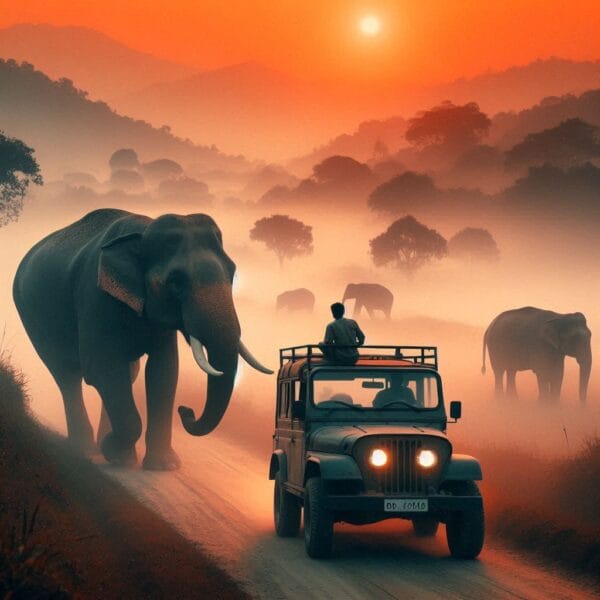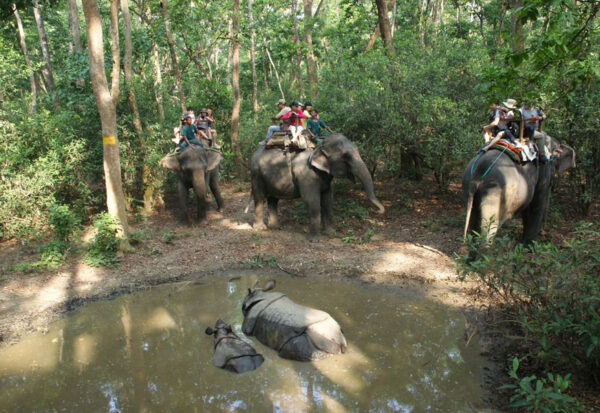Chitwan National Park – The wildlife Safari
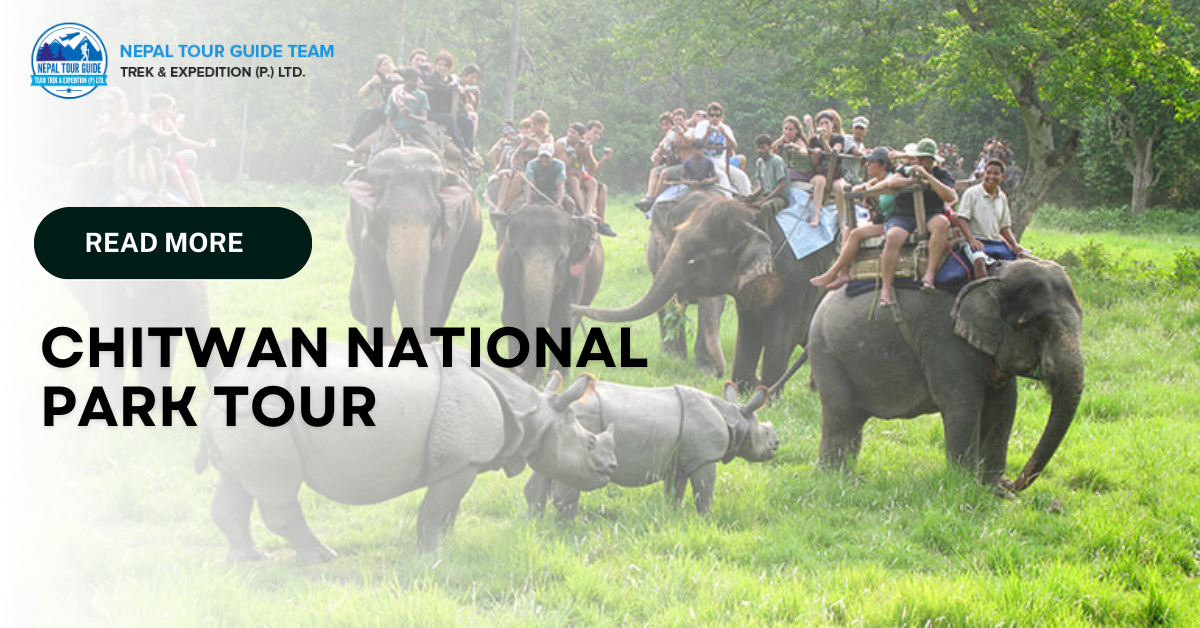
Experience Chitwan National Park, one of Asia’s richest wildlife ecosystems. This incredible park in Nepal is home to iconic species such as Bengal tigers, the greater one-horned rhinoceros, and over 540 species of birds. A visit to Chitwan National Park offers a unique opportunity to see rare and endangered wildlife in their natural habitats.
Key Wildlife Species at Chitwan National Park
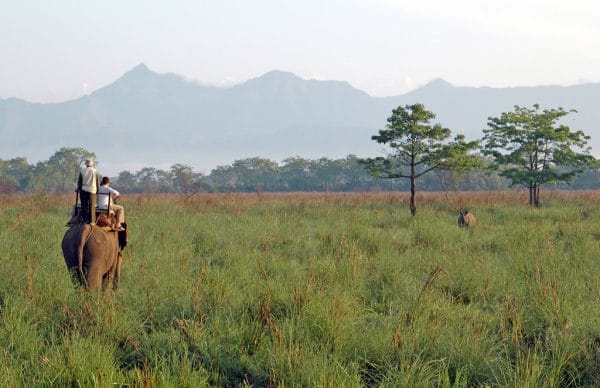
Chitwan National Park is famous for its diverse wildlife, especially big cats and rare mammals. The park shelters around 120 Bengal tigers and about 700 greater one-horned rhinoceros, making it one of the best places for wildlife safaris in Asia.
Bengal Tigers

Best seen in early mornings and late evenings with a spotting success rate of 20-30%. Chitwan National Park is home to one of the most iconic and revered big cats of the Indian subcontinent. The Bengal tiger (Panthera tigris tigris)! The Bengal tiger, renowned for its distinctive orange coat adorned with dark stripes, finds a flourishing habitat within the lush grasslands of Chitwan National Park.
Leopards

Chitwan National Park hosts the most significant leopard population in Nepal, with an estimated count ranging from 70 to 100 individuals inhabiting the park. Inhabiting areas below 4,400 meters above sea level, these wild cats showcase a distinctive yellow coat adorned with black spots on the head, gradually transforming into captivating black rosettes across the body. What’s remarkable is that these black rosettes are unique to each individual.
Comparatively smaller than tigers, these wild cats belong to the Panthera genus, being one of the five species within it. Their adaptability is notable, allowing them to subsist on a diet of hares, rodents, and sizable birds. When their usual prey, typically weighing between 10 to 15 kilograms, isn’t available. Additionally, they exhibit strength to hoist heavy carcasses into trees, showcasing their remarkable abilities. Active during dawn and dusk with a 15-25% success rate.
Fishing Cats
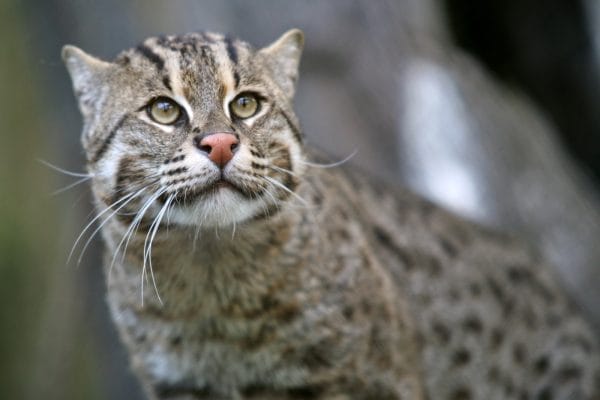
Nocturnal and rarely seen but an exciting species for wildlife watchers. Other important species include Asian elephants, sloth bears, golden jackals, and wild dogs (dholes). For a detailed look at the park’s wildlife, see our Complete Wildlife Guide.
Best Viewing Spots
The prime locations for wildlife viewing:
Grasslands: Ideal for spotting tigers and rhinoceros.
River Banks: Great for viewing gharial crocodiles and water birds.
Sal Forest: Home to elephants and sloth bears.
20,000 Lakes Area: A hotspot for birdwatching and crocodile sightings.
Plan your visit around these locations for the best wildlife experience. Check out Top Safari Spots in Chitwan for more details.
Bird Watching in Chitwan National Park
With over 540 bird species recorded, Chitwan National Park is a paradise for birdwatchers. Must-see birds include:
Great Hornbill
Bengal Florican
Lesser Adjutant Stork
Grey-headed Fish Eagle
Bird activity varies by season. Winter attracts migratory waterfowl, while spring is the breeding season for many species. For more on birdwatching, visit our Birdwatching in Nepal guide.
When to Visit Chitwan National Park
The best time to visit depends on your interests:
Peak Season (October – March): Pleasant weather and maximum wildlife activity.
Summer (April – June): Hot, but animals gather near water—great for birdwatching.
Monsoon (July – September): Lush greenery, fewer tourists, and budget-friendly prices.
Tips for Wildlife Photography
For capturing stunning wildlife photos, bring:
DSLR or mirrorless camera with 400mm+ telephoto lens
Sturdy tripod and extra batteries
The best time to shoot is early morning or late afternoon. Recommended settings: ISO 400-800, aperture f/5.6-f/8, and shutter speed above 1/500.
Conservation and Safety
Chitwan is a conservation success story, protecting critically endangered species like Bengal tigers and gharials. When visiting:
Follow your guide’s instructions
Maintain silence and a safe distance
Avoid flash photography and feeding animals
Learn more about Nepal’s conservation efforts on WWF Nepal.
Plan Your Trip to Chitwan National Park
For the best experience, book early morning safaris. Consider jeep, canoe, or walking safaris. Guides can help you spot fresh tracks and alarm calls.
For travel tips and bookings, visit Tour Guide in Nepal.
Frequently Asked Questions About Chitwan National Park
1. What is the best time to visit Chitwan National Park?
The best time to visit is from October to March, during the dry and cool season—ideal for wildlife viewing. Winter (December to February) is particularly popular. If you’re into birdwatching, April to June is excellent despite the heat. The monsoon season (July to September) brings lush greenery and fewer tourists.
2. How much is the entrance fee to Chitwan National Park?
As per the latest rates:
Foreigners: NR 2,000/day
SAARC nationals: NR 1,000/day
Nepali citizens: NR 150/day
Note: Safari activities like jeep rides or canoe tours have separate fees.
3. Which wildlife can I expect to see in Chitwan?
You may encounter:
120 Bengal Tigers
700 Greater One-Horned Rhinos
Leopards, Sloth Bears, Asian Elephants
Gharial & Mugger Crocodiles
500+ bird species including hornbills, storks, floricans, and eagles.
4. What safari types are available in Chitwan?
You can enjoy:
Jeep Safaris
Canoe Rides
Jungle Walks (guided)
Elephant Safaris
Booking in advance through your resort or local guide is recommended.
5. Is it safe to do a safari at Chitwan National Park?
Yes, safaris—especially in jeeps or canoes—are generally very safe when guided. Walking safaris require extra caution, but risks are low if you follow the guide’s instructions.
6. Can I stay inside Chitwan National Park?
There’s no accommodation inside the park itself, but many lodges and eco-resorts are located just outside in Sauraha and Kasara, offering great access and wildlife viewing.
7. What should I wear and bring for a visit?
Bring:
Dark, neutral-colored clothing (green/brown)
Closed-toe shoes and a wide-brimmed hat
Sunscreen, insect repellent, and water
Camera with a telephoto lens
Binoculars for birdwatching
8. How far is Chitwan from Kathmandu and Pokhara, and how do I get there?
From Kathmandu: ~146 km, approx. 6–7 hours by road
From Pokhara: ~147 km, approx. 5–6 hours by road
Flights: Take a 20-minute flight to Bharatpur, then drive ~30 minutes to the park.
9. How long should I stay at Chitwan National Park?
A 2–4 day stay is ideal for a full wildlife experience: morning/evening safaris, canoe trips, jungle treks, and birdwatching.
10. Are there safety concerns with wildlife like rhinos entering villages?
Yes, especially in buffer zone areas, occasional human–wildlife conflict occurs. Stay alert, follow all park signage, and respect guide instructions.
RELATED TRIPS
Safaris in Chitwan National Park: A Journey into Wildlife
Safaris in Chitwan National Park Chitwan National Park, a UNESCO World Heritage Site, offers an unforgettable experience with elephant...
All Nepal Tour
Nepal Tour Guide's All Nepal Tour covers the highlighted places like Bandipur, Palpa, Pokhara, Chitwan and Lumbini, and is...

